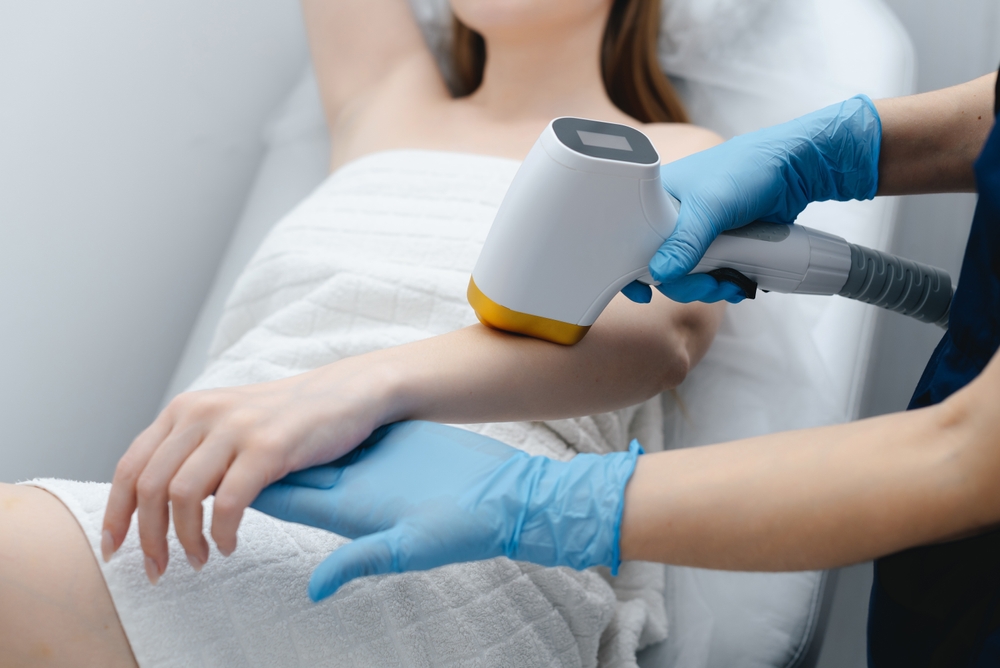Understanding Intimate Laser Hair Removal in the United Kingdom: Technology, Preparation, and Safety Insights for 2026
Did you know that advances in laser technology have improved approaches to intimate hair removal that can be effective for various skin tones in the United Kingdom? This article explores key aspects such as preparation, common treatment outcomes, safety considerations, and costs to provide an informative overview of what this treatment involves

Intimate laser hair removal is a precision procedure that targets the hair follicle using concentrated light, aiming to reduce regrowth over time. In the United Kingdom, clinics increasingly standardise safety measures and staff training while employing devices suited to a range of skin tones. Understanding how the technology works, how to prepare, and what to expect can help you decide if this option aligns with your needs and comfort level in your area.
Cutting-edge Technology for Intimate Laser Hair Removal
Modern platforms typically use one of three wavelengths: Alexandrite (755 nm), diode (around 810 nm), or Nd:YAG (1064 nm). The wavelength chosen affects how deeply the light penetrates the skin and how selectively it targets melanin within the follicle. For intimate areas, many practitioners favour diode or Nd:YAG systems because they balance efficacy with reduced risk of pigmentation changes, especially at higher skin types. Cooling methods—such as contact sapphire tips, chilled air, or cryogen spray—help protect the epidermis and improve comfort during each pulse.
Not all light-based devices are lasers. Intense Pulsed Light (IPL) emits a broad spectrum and can be effective for some hair and skin combinations, but true lasers deliver a single wavelength that many practitioners prefer for precision. Spot sizes and pulse durations are tailored to hair thickness and skin type, and reputable clinics follow laser safety “Local Rules” and conduct a patch test before full treatment.
How to Prepare for Your Intimate Laser Treatment
Skin preparation improves consistency and reduces side effects. Shave the area 24–48 hours before your appointment so the laser can reach the follicle without surface hair causing excess heat. Avoid waxing, tweezing, or epilating for at least three to four weeks, since the follicle needs to be intact. Minimise sun exposure and self-tan for two to four weeks; both can increase the risk of pigmentation changes. Keep the skin clean and dry on the day, avoiding fragranced products, exfoliants, and active acids.
Share your medical history, including photosensitising medications (for example, some antibiotics), recent isotretinoin use, or skin conditions. Most clinics avoid treating during pregnancy and will reschedule if you have active infections, open wounds, or recent sunburn. If using topical anaesthetics, follow the clinic’s instructions precisely, particularly for sensitive mucosal-adjacent skin.
Common Outcomes of Intimate Laser Hair Removal
Most people notice shedding of treated hairs one to three weeks after a session. A full course often spans six to eight sessions, spaced according to the area and growth cycle. Intimate regions can be hormonally influenced, so occasional maintenance may be needed to sustain reductions over time. Results vary by hair colour, density, and skin tone; darker, thicker hair typically responds more predictably than very light or grey hair, which contains less melanin for the laser to target.
Temporary redness and perifollicular swelling are common, usually settling within hours to a day. Some people experience transient dryness or sensitivity. Less frequent effects include pigment changes or blistering; these risks are reduced with appropriate device selection, conservative energy settings, and strict adherence to aftercare. Your practitioner should review expected timelines, likely hair reduction ranges, and the factors that influence individual results.
Safety and Suitability for Various Skin Tones
Safety revolves around matching wavelength and settings to the individual. For lighter skin tones with dark hair, Alexandrite or diode lasers are often selected for efficiency. For medium to deeper skin tones, Nd:YAG is commonly preferred because it penetrates more deeply and interacts less with surface melanin, helping reduce the chance of hyperpigmentation. Patch testing is essential to check skin response before proceeding with a full session.
Clinics should supply protective eyewear and follow laser safety protocols, including controlled access to the treatment room and documented Local Rules. Qualification frameworks—such as Ofqual-regulated Level 4 or higher training for laser and light therapies—are widely recognised. In the UK, independent medical practices may be overseen by national regulators depending on professional registration and setting. Always verify practitioner credentials and any local licensing requirements in your area.
Comfort and Aftercare Practices
Comfort depends on device cooling, settings, and technique. Cooling devices or chilled tips reduce surface heat, while pulse parameters are adjusted to balance effectiveness and tolerance. Some clinics permit topical anaesthetics for small, external areas; these must be used cautiously and only as directed. Communication during treatment allows the practitioner to fine-tune settings and pace.
Post-session care focuses on calming the skin and protecting the barrier. Apply cool compresses and a bland, fragrance-free moisturiser or aloe-based gel. Avoid heat, intense exercise, tight clothing, and friction for 24–48 hours. Refrain from exfoliants, retinoids, and perfumed products until sensitivity settles. Do not wax or tweeze between sessions; shaving is acceptable. For exposed areas, daily broad-spectrum sun protection helps reduce pigmentation risk. Contact the clinic if you notice persistent pain, blistering, or signs of infection.
Conclusion
Intimate laser hair removal in the United Kingdom combines targeted light-based technology with careful preparation and robust safety practices to achieve longer-term hair reduction. Selecting an appropriate wavelength for your skin tone, verifying practitioner training, and following clear aftercare guidance all contribute to consistent outcomes. Thoughtful planning and open communication help ensure a predictable, comfortable experience over the full course of treatment.




